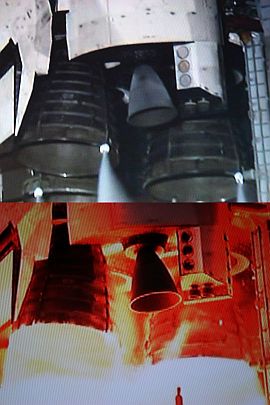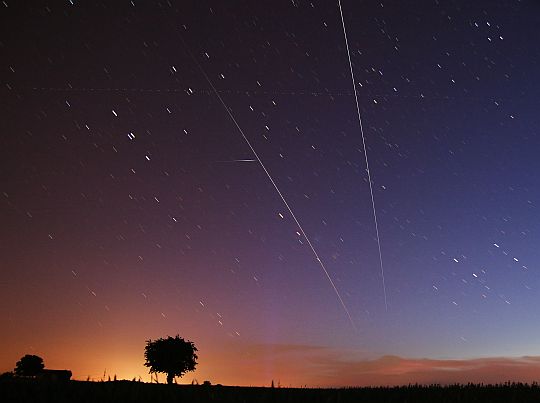Landsat 5, one of several Landsat Earth-observing spacecraft has been operational for 25 years and counting. Originally intended for a three-year mission, this bird is still ticking. One of the more startling observations made by the Landsat program is a 25 year visual history of Las Vegas urban expansion.
Images courtesy and © NASA/USGS. Click image for larger view.
A Desert City Blooms
In the 25 years that Landsat 5 has been in orbit, the desert city of Las Vegas has gone through a massive growth spurt. The outward expansion of the city is shown here with a series of false-color images. The dark purple grid of city streets and the green of irrigated vegetation grow out in every direction into the surrounding desert. These images were created using reflected light from the shortwave infrared, near-infrared, and green portions of the electromagnetic spectrum (Landsat 5 TM bands 7,4,2).
Credit: NASA/USGS
 Notice the runways at Las Vegas McCarran Airport (Just below the center of the urban mass), barely visible in 1984, now clearly visible in 2009, as it has been surrounded by industrial growth.
Notice the runways at Las Vegas McCarran Airport (Just below the center of the urban mass), barely visible in 1984, now clearly visible in 2009, as it has been surrounded by industrial growth.


 STS-126 is on the way to the ISS. Damsel snapped these from the TV before and after engine ignition.
STS-126 is on the way to the ISS. Damsel snapped these from the TV before and after engine ignition. I have been reassigned to another job in another location. I hate to move. All that packing up, making arrangements to transfer the services, etc. Even with the aid of an administrator, changing job assignments where a physical move from one facility to another is a pain.
I have been reassigned to another job in another location. I hate to move. All that packing up, making arrangements to transfer the services, etc. Even with the aid of an administrator, changing job assignments where a physical move from one facility to another is a pain. As for the old job, the product line is a very good thing. Decoupling from that fact, the skill set for the job I was doing required little other than some fundamental knowledge of computers and a little analysis. Not to brag, but it was not much of a challenge and didn’t take full advantage of my experience.
As for the old job, the product line is a very good thing. Decoupling from that fact, the skill set for the job I was doing required little other than some fundamental knowledge of computers and a little analysis. Not to brag, but it was not much of a challenge and didn’t take full advantage of my experience.